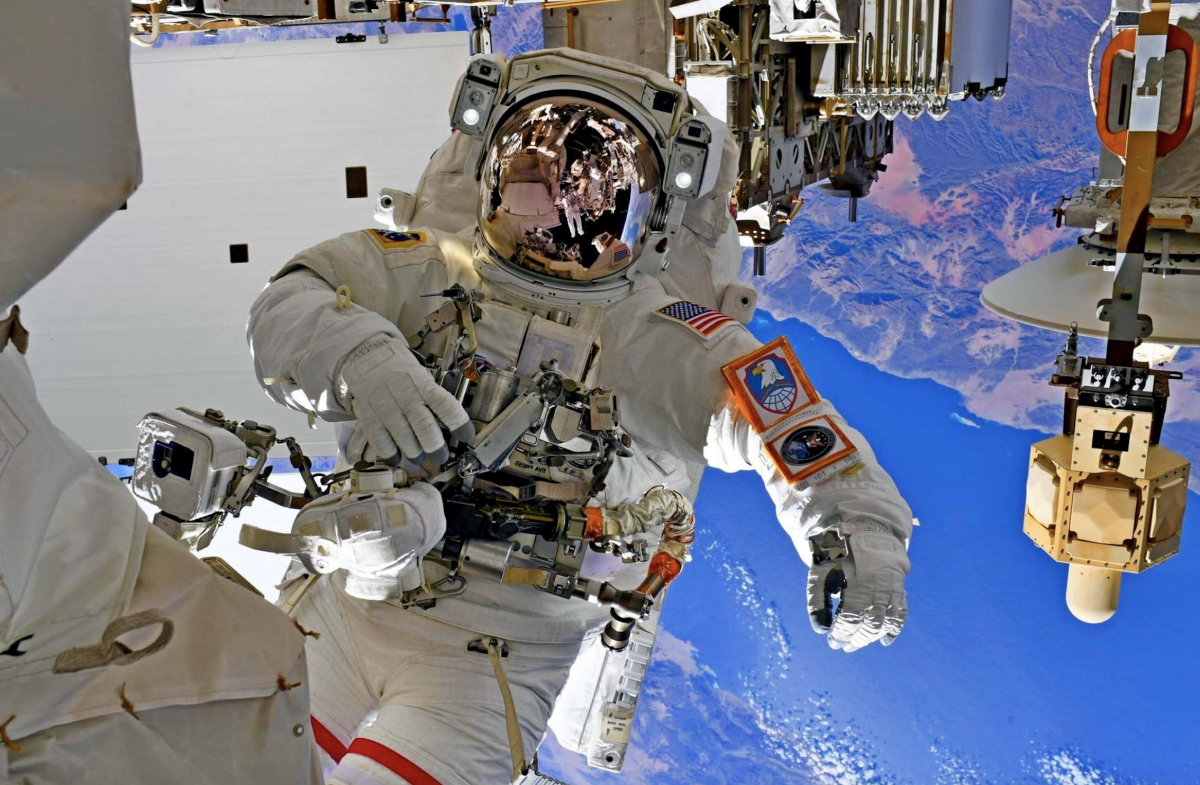[ad_1]
There was a time, when one had to have the Right Stuff to be an astronaut.
Usually, a test pilot, with years of flight experience, or, a scientist/engineer with degrees as long as your arm. The best of the best, as they say.
Now, all it takes is US$55 million.
In a space-age first, the crew and passengers of the first private trip to the International Space Station was introduced on Tuesday, Al Jazeera reported.
Led by a former NASA astronaut now working for Houston-based space tourism firm Axiom Space, three men are each paying the $55mn to fly on the SpaceX rocket next January.
“This is the first private flight to the International Space Station. It’s never been done before,†said Axiom’s chief executive and president Mike Suffredini, a former space station program manager for NASA, the report said.
While mission commander Michael Lopez-Alegria is well known in space circles, “the other three guys are just people who want to be able to go to space, and we’re providing that opportunity,†Suffredini told The Associated Press.
Axiom’s first customers include Larry Connor, a real estate and tech entrepreneur from Dayton, Ohio, Canadian financier Mark Pathy and Israeli businessman Eytan Stibbe, a close friend of Israel’s first astronaut Ilan Ramon, who was killed in the space shuttle Columbia accident in 2003, the report said.
The first crew will spend eight days at the space station and will take one or two days to get there aboard a SpaceX Dragon capsule following liftoff from Cape Canaveral in Florida.
“As the first fully private mission to go to the ISS, we feel an enormous responsibility to do it well,†said Michael López-AlegrÃa, the mission’s commander. “We realize that this is the trend-setter, the bar-setter for the future, and so our goal is to really exceed all expectations.â€
 Living alongside working astronauts from the US, Russia, and likely Germany, the private crew members will roll out sleeping bags somewhere on the station.
“There aren’t any astronaut crew quarters for us, which is fine. Sleeping in Zero-G is pretty much the same wherever you are once you close your eyes,†López-AlegrÃa said.
Russia has been in the off-the-planet tourism business for years, selling rides to the International Space Station since 2001, the report said.
Other space companies like Richard Branson’s Virgin Galactic and Jeff Bezos’s Blue Origin plan to take paying customers on up-and-down flights lasting just minutes.
These trips — much more affordable, with seats going for hundreds of thousands versus millions — could kick off this year, the report said.
SpaceX’s Crew Dragon capsule, an acorn-shaped pod with seats for seven, was approved last year by NASA under its Commercial Crew Program to fly humans to the space station.
Under that roughly $4.5 billion program, SpaceX developed Crew Dragon alongside its rival Boeing, which is about a year away from certifying its Starliner capsule for human flights.
Both companies have contracts with NASA to fly six missions carrying US astronauts to space.
“These guys are all very involved and doing it for kind of for the betterment of their communities and countries, and so we couldn’t be happier with this makeup of the first crew because of their drive and their interest,†Suffredini said.
Each of these first paying customers intends to perform scientific research in orbit, he said, along with educational outreach.
Lopez-Alegria, a former space station resident and spacewalking leader, called the group a “collection of pioneers.â€
Tom Cruise was mentioned last year as a potential crew member; NASA top officials confirmed he was interested in filming a movie at the space station, the report said.
There was no word on whether Cruise will catch the next Axiom flight.
Each of the private astronauts had to pass medical tests and will get 15 weeks of training, according to Suffredini.
The 70-year-old Connor will become the second-oldest person to fly in space, after John Glenn’s shuttle flight in 1998 at age 77, the report said.
Axiom plans about two private missions a year to the space station. It also is working to launch its own live-in compartments to the station beginning in 2024.
Sources: Al Jazeera, The Verge, Associated Press, Space.com, NASA
[ad_2]
Source link













